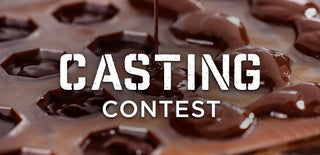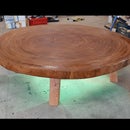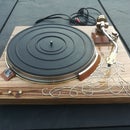Introduction: Skull Mug
A cocktail is a combination of a good drink and a nice presentation. If you get something like that in front of you, it is usually a work of art with fruit, drink and layers of liquor. This mug was made to put in another cocktail glass and to allow smoke to come out with dry ice. Of course it is also possible to make a cocktail directly in this mug.
Step 1: Model the Skull
Step 2: Making the Mold
Required materials:
-children's building blocks (big)
-smooth plate
-fine plaster for molds
-bucket
-clay
-tape
-------------------------------------------------------------------
Put the design on the plate and start to make a wall with the building blocks about 2 cm from the outside. Do not make the walls too fine or the mold will soon be saturated with water when you pour the clay. (picture 1) Take a thin long roll of clay and close the bottom. Otherwise you have a chance that the plaster will run out. (picture2) Now stick the building blocks together with adhesive tape, otherwise because the pressure of the plaster you have the chance it starts to run between them.
Now look at your shape and determine where the separating line of the mold will come. The chance that the dividing line will run very tortuous is great. And also decide in which order you will take the mold apart. I have chosen to do the front first and the intention is, that this is also the first piece that has to be removed straight ahead. (picture 3) Make sure that the walls fit nicely with the shape. Otherwise you will have a lot more scrape work.
Spray the walls with Vaseline spray so that the plaster comes loose easily. Mix the plaster with a fair amount of water. If it is watery it will run more in the small details and you will have less chance of air bubbles. If you pour the plaster in, do this quite calmly and with a fine jet. This way the plaster has the time to get everywhere where it needs to be. (picture 4)
When the plaster is dry remove the clay walls (picture5) and choose your 2nd side to pour. For my form I just have to make sure that I place the clay wall in the middle. (picture 6) Spray the mold again with Vaseline spray, then mix the plaster and pour it into it. (picture 7)
Do the same with the other side.
Loosen the shape from the plate and turn it over. Place 2 additional rows of building blocks to be able to pour the bottom with plaster. (picture 8) Re-spray with Vaseline spray and pour in the plaster. (picture 9)
Remove the building blocks and carefully open the mold. (picture 10-11) Keep the mold parts under running water and rub the remaining clay pieces with a paintbrush (picture 12)
Dry the parts with a towel and let them dry in the sun or an oven. (picture 13) The pieces must be dry if you want to start pouring with porcelain clay.
Step 3: Pour the Skulls
Required materials:
-mixer
-pour porcelain clay
-refill cup
-tape
-crouring pad
-paintbrush
--------------------------------------------------------------
Always start with mixing your bucket of cast clay. If it is not liquid enough, you can add product that makes it more fluid. (picture 1) Also fill a cup to refill the mold if necessary. (picture 2)
Pour the clay into the mold to the edge. (picture 3) The water from the clay will be sucked into the plaster so that the outside edges will become drier. The longer you put in the clay, the thicker the edge will be. I make it about 0.5 cm thick. You will see that the clay sinks and then you have to add clay. More convenient with a small cup than a bucket size one.
When the desired size is reached, turn the mold and let the excess clay run back into the bucket. Let the mold stand a little bit so that everything is out. (picture 4)
Turn the mold back and let it dry for about 20-30 min. (picture 5) You must remove the shape from the mold before it is dry. He must be leather hard, but it needs to have shrunk enough to be able to get out easily. (picture 6) The chance that you will not succeed the first time is great, but try again until you have found the right drying time. I have found out that a new mold is more difficult to release than an old one
Once you have got the shape out, let it dry. (picture 7-8) Scrape away the excess pieces until all the seams are gone. (picture 9-10-11) Finish it off with a dry scouring pad and a dry paintbrush.
Step 4: Bake and Glaze the Skulls
Required materials:
-glaze
-paintbrush
-baking oven (1300°)
---------------------------------------------------------
Bake the finished pieces to 1000 ° and let them cool down. Then take a glaze of your choice and rub the pots in with a paintbrush. Make sure that the glaze has the same thickness everywhere. (picture 1)
Because the skulls must be waterproof, we have to bake at higher temperatures. My glaze must be baked at 1250 ° .
Make sure that your clay that you use is also resistant to these temperatures.
This is the finished piece. (picture 2) I hope you can use some of this manual and it is possible to use more complicated shapes than this one. Thinking carefully before you start is the key.
Thank you for reading my manual.
Step 5:

Participated in the
Casting Contest













